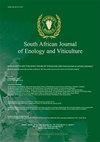瓶中发酵起泡酒:在第二次发酵中使用软木塞还是瓶盖?
IF 1.1
4区 农林科学
Q4 FOOD SCIENCE & TECHNOLOGY
引用次数: 2
摘要
瓶装发酵起泡酒生产商正在不断努力提高质量和生产新产品。在酵母糟的第二次发酵和成熟过程中,可以使用的一种生产工具是软木塞封口,而不是冠盖封口。轶事证据表明,这导致了葡萄酒的风格差异。研究了六对南非瓶装发酵起泡酒(Méthode Cap Classique),用软木塞或冠盖封闭。分析包括常压、红外光谱、酚酸、感官特性和CO2动力学。一般来说,软木塞葡萄酒和冠盖葡萄酒之间存在差异。与冠盖葡萄酒相比,软木封闭葡萄酒的压力往往较低,尽管仍在法律要求范围内。其他差异在红外光谱数据和分析葡萄酒的多酚图谱中也很明显。没食子酸、咖啡酸、咖啡酸类和对香豆酸类的含量可以共同用作标记化合物,以区分软木塞葡萄酒和冠盖葡萄酒。软木塞的作用在感官属性和CO2动力学方面也很明显。软木封闭的葡萄酒被认为气泡较小,保存时间较长。研究还表明,软木塞封闭的葡萄酒在饮用后从玻璃杯中损失二氧化碳的速度往往比皇冠封闭的葡萄酒慢。这些数据初步支持了传闻证据,即软木塞可以在酵母糟的第二次发酵和成熟过程中用来改变波特发酵起泡酒的风格。本文章由计算机程序翻译,如有差异,请以英文原文为准。
Bottle Fermented Sparkling Wine: Cork or Crown Closures During the Second Fermentation?
Bottle-fermented sparkling wine producers are continuously striving to increase quality and produceniche products. One production tool that could be used is a cork closure instead of a crown cap closureduring the second fermentation and maturation on yeast lees. Anecdotal evidence suggests that thisleads to stylistic differences in the wine. Six pairs of South African bottle-fermented sparkling wines(Méthode Cap Classique), closed by either a cork or crown cap, were investigated. Analyses includedbottle pressure, infrared spectroscopy, phenolic acids, sensory attributes and CO2 kinetics. Generally,there were differences between the cork-closed and crown-capped wines. Cork-closed wines tended tohave lower pressure compared to crown-capped wines, albeit still well within legal requirements. Otherdifferences were evident in the infrared spectral data and in the polyphenol profile of the analysed wines.Levels of gallic, caftaric, caffeic and p-coumaric acids could be used collectively as marker compounds todifferentiate between cork-closed and crown-capped wines. The effect of the cork was also evident in thesensory attributes and CO2 kinetics. Cork-closed wines were judged to have smaller bubbles and a longeraftertaste. It was also shown that the cork-closed wines tended to lose CO2 from the glass slower after beingpoured than their crown-capped counterparts. The data tentatively support the anecdotal evidence thatcork can be used during the second fermentation and maturation on the yeast lees to change the style ofbottle-fermented sparkling wine.
求助全文
通过发布文献求助,成功后即可免费获取论文全文。
去求助
来源期刊
CiteScore
2.50
自引率
7.70%
发文量
1
审稿时长
>36 weeks
期刊介绍:
The South African Journal of Enology and Viticulture (SAJEV) publishes full-length original Research Papers, Research Notes and Review Papers on all subjects related to enology and viticulture. The SAJEV does not accept articles published in, or submitted to, other journals.

 求助内容:
求助内容: 应助结果提醒方式:
应助结果提醒方式:


